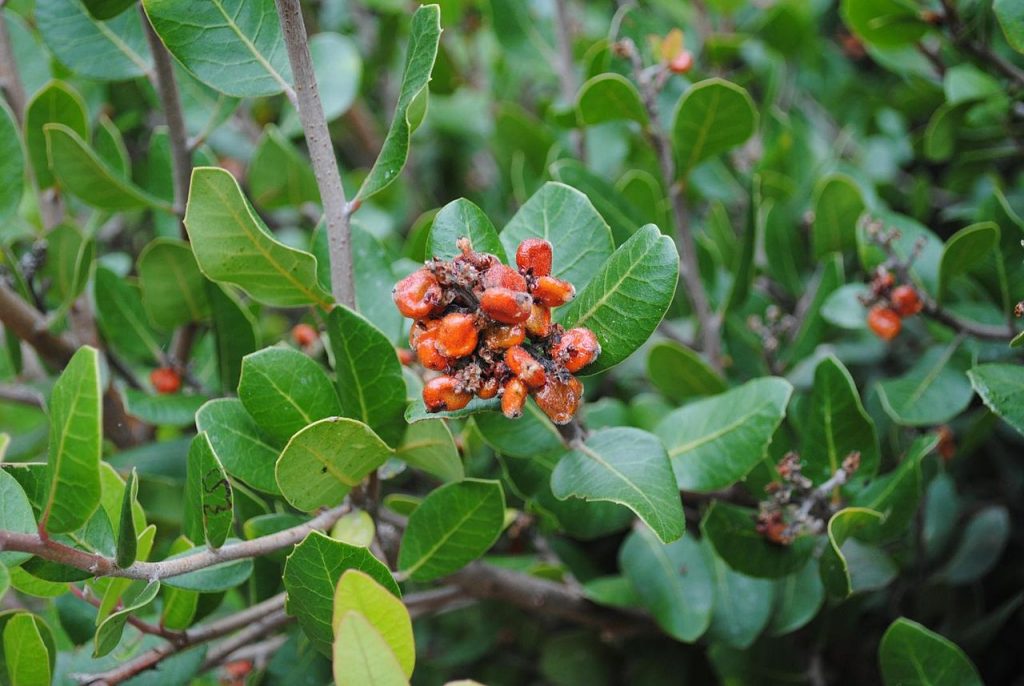
Native to coastal sage scrub and chaparral of Southern California and Baja, this evergreen shrub or small tree is a member of the cashew family, Anacardiaceae, that also includes sumac, mango, and poison ivy. The plant grows 3-30′ tall and has stout, short trunk and many spreading branches. The bark is smooth and reddish when young but with age becomes gray and cracked, showing red bark beneath. The leathery, mid- to dark-green leaves are 1-2 1/2″ long, elliptical, and are carried on pinkish to brown petioles. The leaves are usually slightly cupped, have small teeth on the margins, and may have pinkish margins and midribs. Tight terminal clusters of bisexual or pistillate flowers appear from late winter to spring. Each fragrant flower is about 1/4″ across and has 5 white to pink petals. The sticky, flattish, 1 seeded fruit is covered with fine reddish-brown hairs and is attractive to birds and small mammals. The pulp of the fruit is acidic and used to flavor drinks for humans, hence the common names lemonade berry and lemonade sumac. The plants takes well to pruning and can be used as a formal hedge or espalier. They are drought tolerant and valued for xeriscaping as well as for stabilizing soil. The genus name, Rhus, is the Greek name for one species, Rhus coriaria. The specific epithet, integrifolia, comes from the Latin words integer, meaning entire, and folium meaning leaf, referring to the leaf margins.
Outstanding Feature: Foliage
Form: Rounded
Growth Rate: Moderate
Bloom: Tight terminal clusters of white to pink flowers from late winter to spring
Size: 3-30′ H x 3-20′ W (tends to be short and wide on slopes)
Light: Full sun to partial shade
Soil: Average, dry, well-drained; tolerant of lean soil and drought once established
Hardiness: Zones 8-11
Care: Low maintenance
Pests and Diseases: None of significance
Propagation: Seed
Outstanding Selections: None available
Photo Credit: Wikipedia